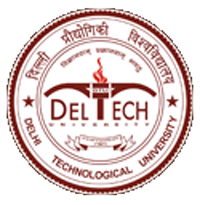Please use this identifier to cite or link to this item:
http://dspace.dtu.ac.in:8080/jspui/handle/repository/21631Full metadata record
| DC Field | Value | Language |
|---|---|---|
| dc.contributor.author | SHARMA, DIVYA | - |
| dc.date.accessioned | 2025-06-09T05:27:20Z | - |
| dc.date.available | 2025-06-09T05:27:20Z | - |
| dc.date.issued | 2025-06 | - |
| dc.identifier.uri | http://dspace.dtu.ac.in:8080/jspui/handle/repository/21631 | - |
| dc.description.abstract | Cancer continues to be a major contributor to deaths worldwide, with drug resistance significantly compromising treatment efficacy and patient prognosis. This study investigates the therapeutic potential of multi-target AURKB (Aurora Kinase B) and KRAS pathways using phytochemicals as an innovative approach to overcome limitations of conventional single-target therapies. This study evaluated AURKB expression patterns across multiple cancer types through web tools like TIMER and UALCAN. This research established a critical mechanistic link between KRAS mutations and Aurora kinase activation, where KRAS-driven pathways enhance AURKA and AURKB expression through direct mechanisms and MYC activation, creating a dependency loop in KRAS-mutant cancer cells. To identifying potential inhibitors, a library of 300 phytochemicals was curated from the NPACT database and downloaded from the PubChem database. These compounds were subjected to molecular docking using PyRx (v0.8). Five compounds Cycloartobiloxanthone, Guggulsterone, 6-Hydroxy-6a,12a-dehydro-alpha-toxicarol, Withaferin A, and Withaphysacarpin—demonstrated superior binding affinity to AURKB compared to reference drugs VX-680 and Danusertib. For KRAS G12C targeting, four phytochemicals Subtrifloralactone E, Artoindonesianin P, 24 Epibrassinolide and Orientanol C exhibited effective binding interactions with Cys12, comparable to the benchmark drug Sotorasib. The selected phytochemicals demonstrated favorable pharmacokinetic properties, fulfilling Lipinski's Rule of Five with high gastrointestinal absorption (bioavailability score 0.55) and moderate aqueous solubility. Toxicity assessments revealed non-mutagenic profiles (AMES negative) for all compounds, with most exhibiting non-hepatotoxic characteristics, presenting superior safety profiles compared to synthetic alternatives. Notably, these natural compounds avoided major CYP enzyme inhibition, reducing drug-drug interaction risks. These findings highlight the promising therapeutic potential of phytochemicals as multi-target inhibitors capable of simultaneously disrupting oncogenic growth signals and cell division vi machinery. The multi-target capabilities, reduced toxicity burden, and improved patient tolerance profiles position these natural compounds as valuable candidates for precision oncology applications. This multi-target approach addresses the critical limitation of single target therapies that often lead to resistance through alternative survival mechanisms. Future directions should focus on structure-activity relationship studies, molecular dynamics simulations, and integration of AI-driven screening tools to accelerate the discovery of plant based targeted cancer therapeutics in precision oncology. | en_US |
| dc.language.iso | en | en_US |
| dc.relation.ispartofseries | TD-7897; | - |
| dc.subject | MULTI-TARGET PHYTOCHEMICAL APPROACH | en_US |
| dc.subject | AURKB | en_US |
| dc.subject | KRAS G12C | en_US |
| dc.subject | PRECISION CANCER THERAPY | en_US |
| dc.subject | PHYTOCHEMICALS | en_US |
| dc.subject | IN SILICO ANALYSIS | en_US |
| dc.subject | CANCER DRUG RESISTANCE | en_US |
| dc.subject | PRECISION ONCOLOGY | en_US |
| dc.subject | MULTI TARGET THERAPY | en_US |
| dc.title | MULTI-TARGET PHYTOCHEMICAL APPROACH AGAINST AURKB AND KRAS G12C: COMPUTATIONAL SCREENING FOR PRECISION CANCER THERAPY | en_US |
| dc.type | Thesis | en_US |
| Appears in Collections: | M Sc | |
Files in This Item:
| File | Description | Size | Format | |
|---|---|---|---|---|
| Divya Sharma M.Sc..pdf | 2.42 MB | Adobe PDF | View/Open |
Items in DSpace are protected by copyright, with all rights reserved, unless otherwise indicated.



